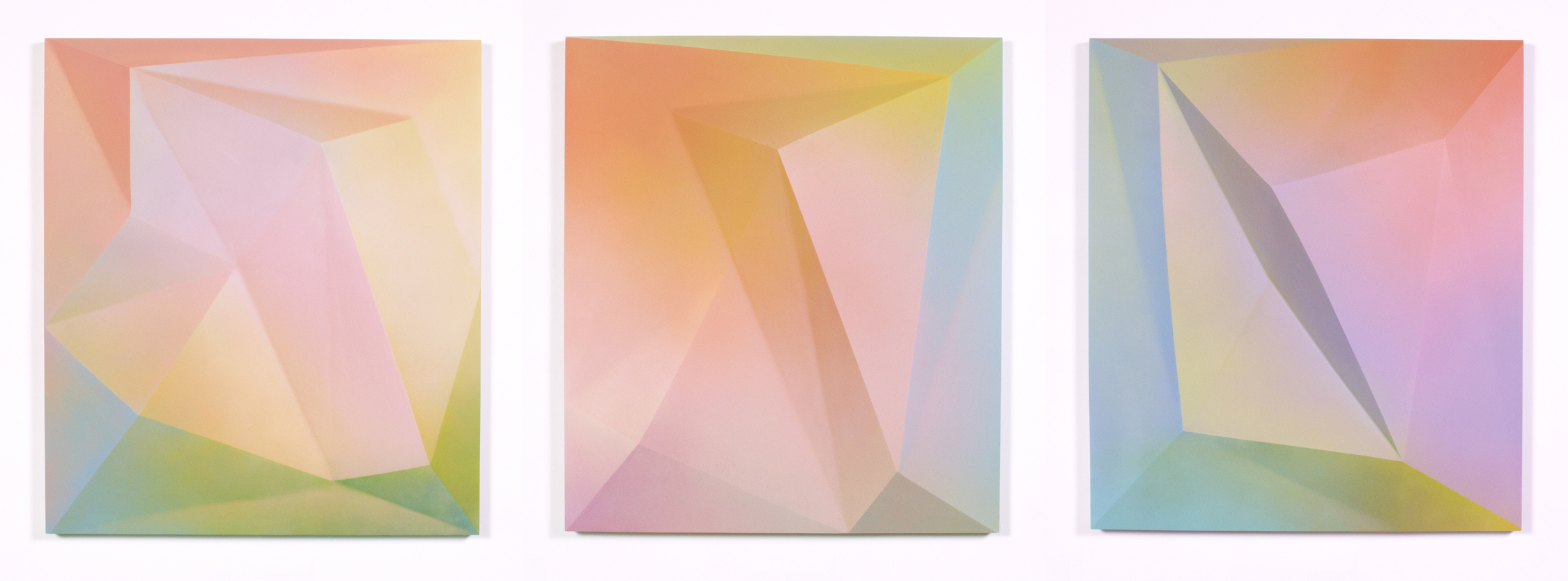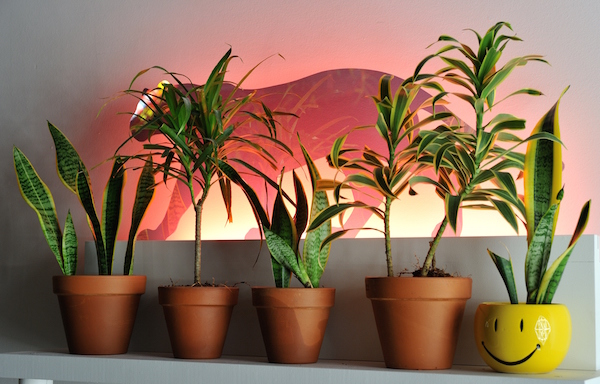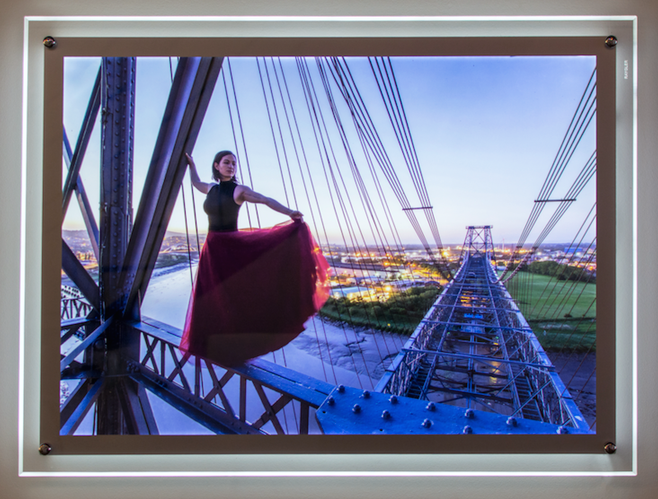
Will Penny, Disruptor I, II, III respectively, Acrylic on epoxy laminate panel, projection, Night & Day, Joseph Gross Gallery in New York, NY, Photo by Stephen Smith, 2016
What happens when the lights go out? When art that is meant illuminate suddenly goes dark? At the Joseph Gross Gallery, the exhibition Night & Day curated by gallery director Lynzy Blair showcases works that all require an electric current to fulfill their artistic intention. Many galleries often unplug during the evening. Everything is shut-down including the art. However, is this common procedure something intended by the artist? Lest we forget that the purpose of exhibiting art in galleries is to sell it. Whether to a corporate or private collection all artwork deserves a home and a place to be enjoyed. This is what leads us to the initial inquiry at the top of this paragraph as bulbs, even LED lights, do not last forever.
Night & Day is doing something out of the ordinary as they are never turning off the current that feeds the art, hence the title. The gallery is allowing the artwork to glow, as it is meant to, throughout the duration of the exhibition. By doing this, the viewers experience (although seen in the late evenings through the gallery windows) is of work that appears brighter when not near the rays of daylight. On my visit, some of the work was actually difficult to ‘see’ or fully experience due to the presence of natural light in the venue. Such was the case with a three sculptural, geometric paintings by Will Penny. The surfaces are actually video-mapped and are projected on, by a single projector installed near the ceiling. As evening approaches the programmed projection, a malleable, living painting of sorts, comes alive in a similar way as the moon; always present but hidden by daylight.

Dave Singley, Installation detail, Night & Day, Joseph Gross Gallery in New York, NY, Photo by Stephen Smith, 2016
Artwork that is meant to be lit can sometimes initially appear too easy. It can appear to rely on light as a source of intrigue and even at times gimmicky rather than as a true medium. Three of the most successful artist’s who have used light are Felix Gonzalez-Torres, photographer Jeff Wall and Tracey Emin. In each these examples, the light is not relied upon, but rather used as a poetic gesture. Each of the artists in Night & Day attempt to use light in a similarly, some more successfully then others, as a medium rather than an afterthought. Yet, the question remains, what happens when the light goes out? Does the art still function, in an aesthetically pleasing way? Walking through the exhibition with Lynzy Blair, she spoke of her own interest in art that uses light and the way it can be experienced differently based on the time of day or presence of natural light. As we spoke, her intention as a curator became clearer as I envisioned particular artworks within domestic or even commercial situations. Looking at a series of photographs (not Photoshopped) in lightboxes by artist Lucinda Grange – who is also an urban explorer – Blair suddenly withdrew one of the plugs from the wall, instantly removing any source of light that once fed the wall-based structure. While at first shocking, not something often seen in a gallery, it was also refreshing and the photographs still looked beautiful without the internal glow of hidden bulbs.

Lucinda Grange, Lightbox photograph documenting urban exploration, Installation detail, Night & Day, Joseph Gross Gallery in New York, NY, Photo by Stephen Smith, 2016
While an exhibition exploring light in art is not original or ground breaking by any means, what Night & Day does succeed at is giving the viewer the opportunity to look at art in an environment that is representational of a what exist outside of the white box. It offers food for thought on success versus failure and as with all art exhibitions, allows you to make up your own mind. Failure in art, such as one of my personal favorite pieces by Giovanni Anselmo, (“Senzo Titolo, Struttura che Mangia“, 1968) is often determined by the artist but then left in the hands of the collector or institution where it is exhibited. If the lights of an artwork should dim or go out, is the piece considered a failure, detached from its original intention? Or rather has it been given a new life something that relies on tension declared by darkness.
Night & Day is on view until August 27th, 2016 and features work by LaLa Abaddon, Lucinda Grange, Boris Ipsum, George Kroenert, Eric Otto, Jason Peters, Will Penny, Eric Ruggiero, and Dave Singley.
More soon!
Katy Diamond Hamer is the founding editor of Eyes Towards the Dove and contributes to several art magazines. Follow her on Instagram @katyhamer
